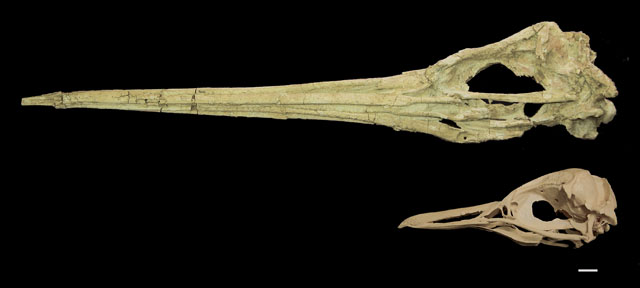Giant penguins once swam the tropical seas
By Elsa Youngsteadt
Photo by Daniel Ksepka
Five-foot tall penguins with seven-inch spear-like beaks once dived in the coastal waters of South America, just a thousand miles from the equator. And they were there when the earth was much warmer than it is today, before polar ice caps even existed. Paleontologists recently discovered fossils of two previously unknown penguin species in Peru. Their discovery that has given rise to new interpretations of penguin evolution.
The two fossils are described and analyzed in the July 10, 2007 issue of the Proceedings of the National Academy of Sciences. The paleontologists found the fossils in rock formations of known ages, together with previously described snail fossils that confirmed their origins in the Eocene epoch.
It was previously believed that penguins diversified in cold polar regions and migrated to the tropics only 4-8 million years ago, after the earth underwent a cooling period. The new evidence shows that penguins were present in warm tropical regions more than 30 million years ago, before global cooling. The new fossils not only provide a better picture of the physical characteristics of early penguins, they also overturn conventional wisdom on the relationship between penguin evolution and climate.
Finally, when the researchers constructed a new penguin family tree based on 194 physical characteristics of living and extinct penguins, as well as DNA sequence from all living penguins, they came up with an unusual result. Previous estimates based on DNA sequence alone suggested that the modern penguin family is some 40 million years old. The new tree, calibrated with fossil ages, makes this family only 8 million years old.
Links
PNAS for original research article
LiveScience.com story
ABC News story
Nature news story
North Carolina State University news release
Geologic time table
Questions for review and discussion
1. Describe the newly discovered penguins-- how big were they? What were some of their physical features?
2. How did the paleontologists determine the ages of the fossils?
3. How do the fossils change ideas about penguin evolution and climate?
4. The authors of the study emphasize that their discovery does not mean that modern penguins could cope with global warming. Why would this not be a valid conclusion?
[ more ]

